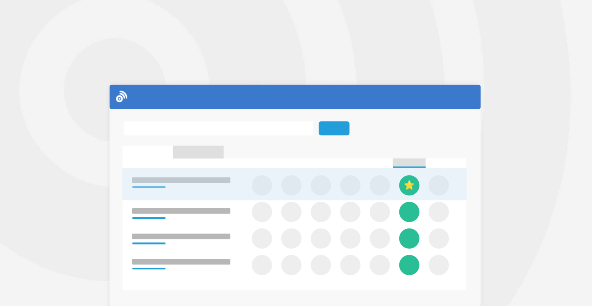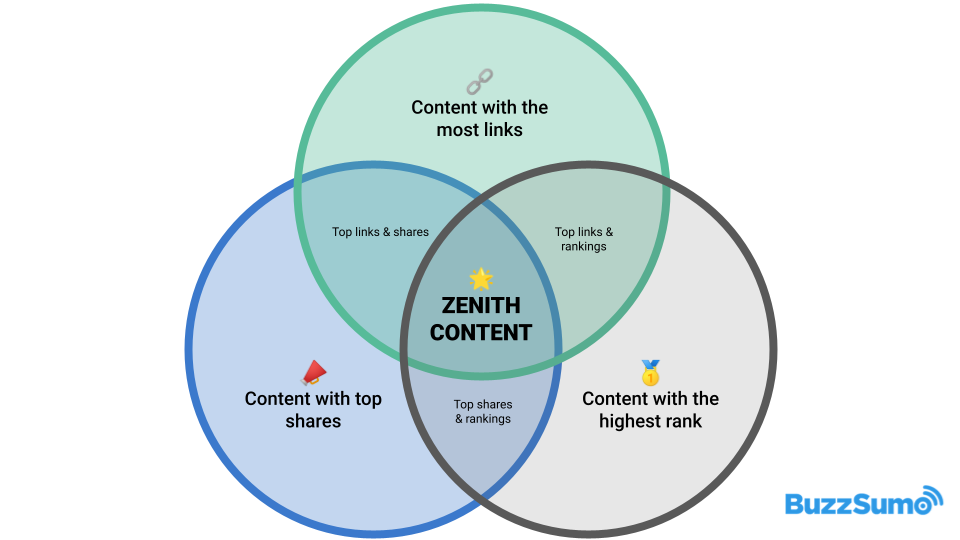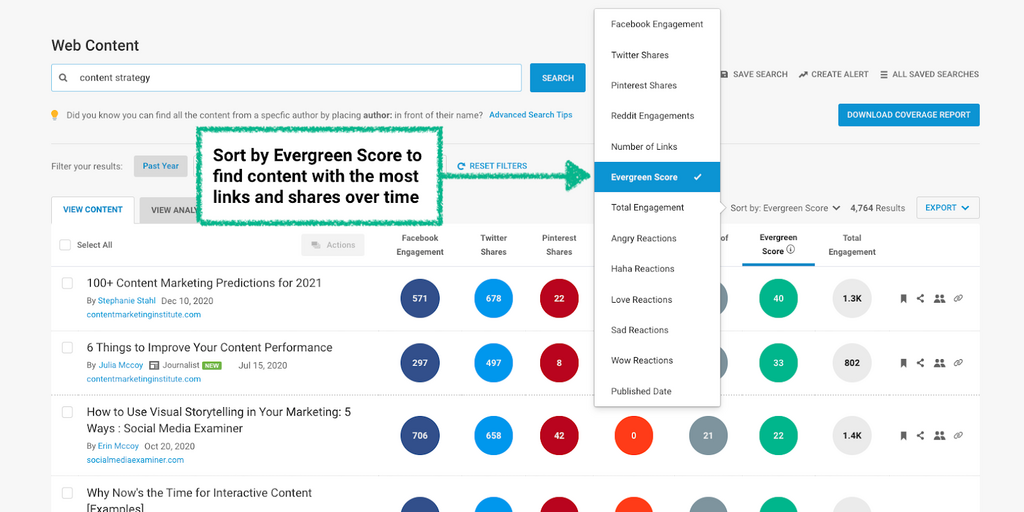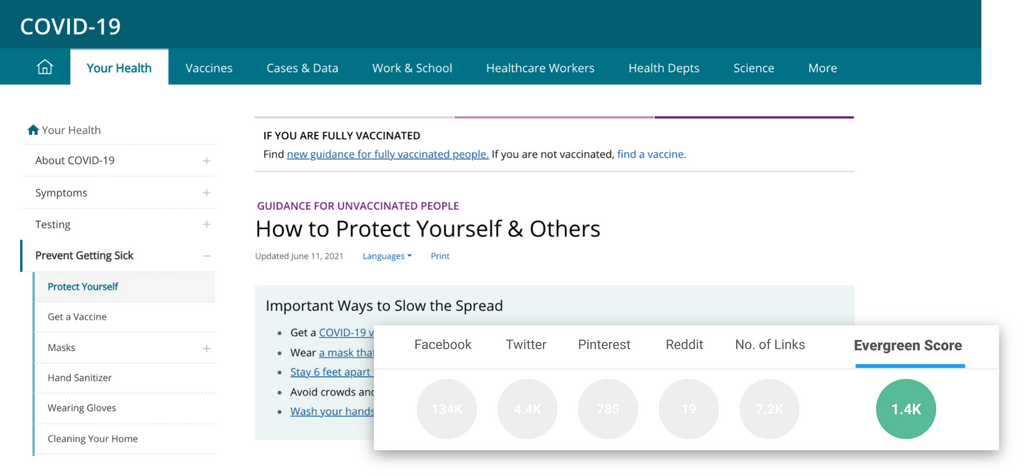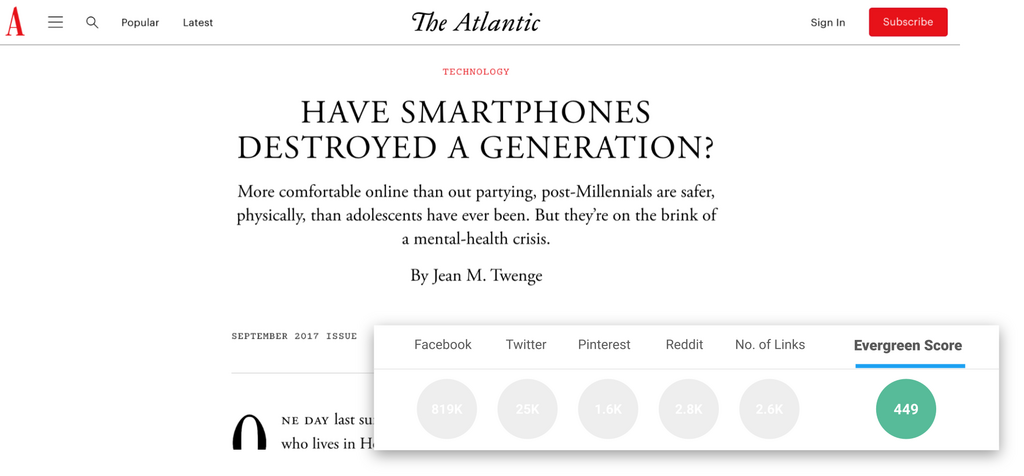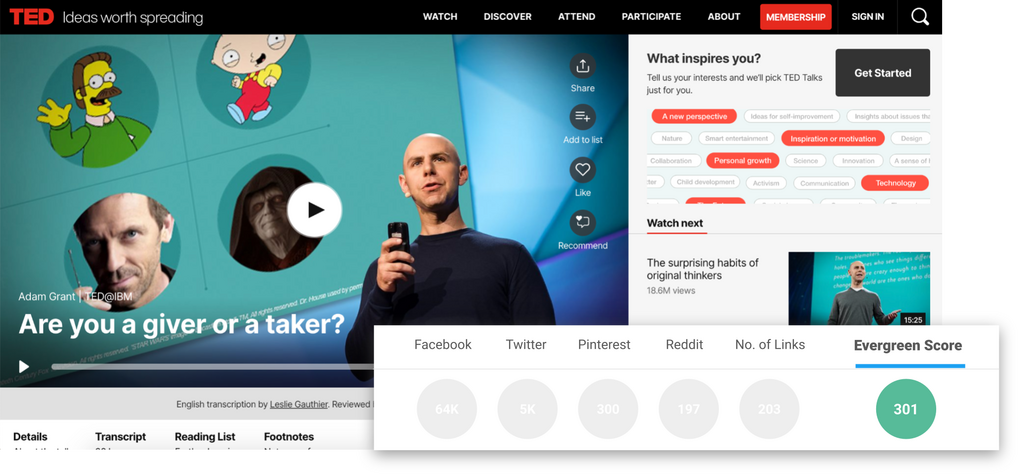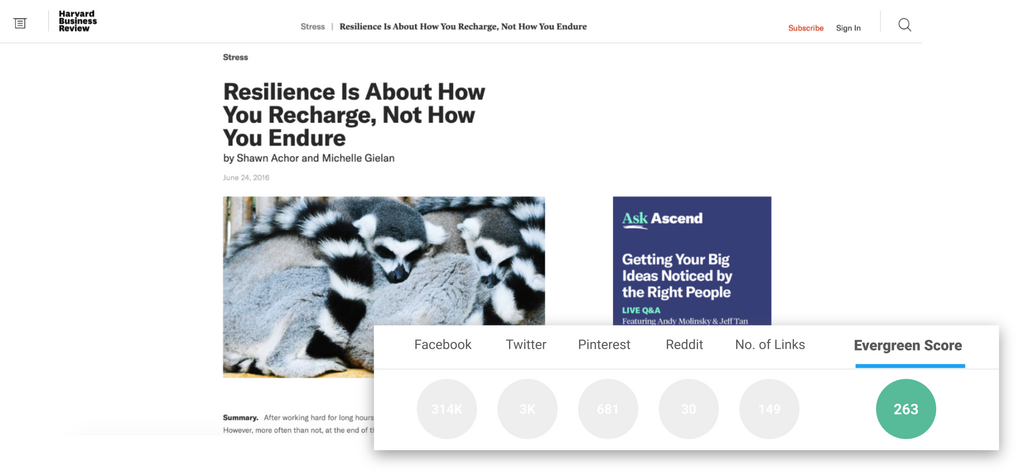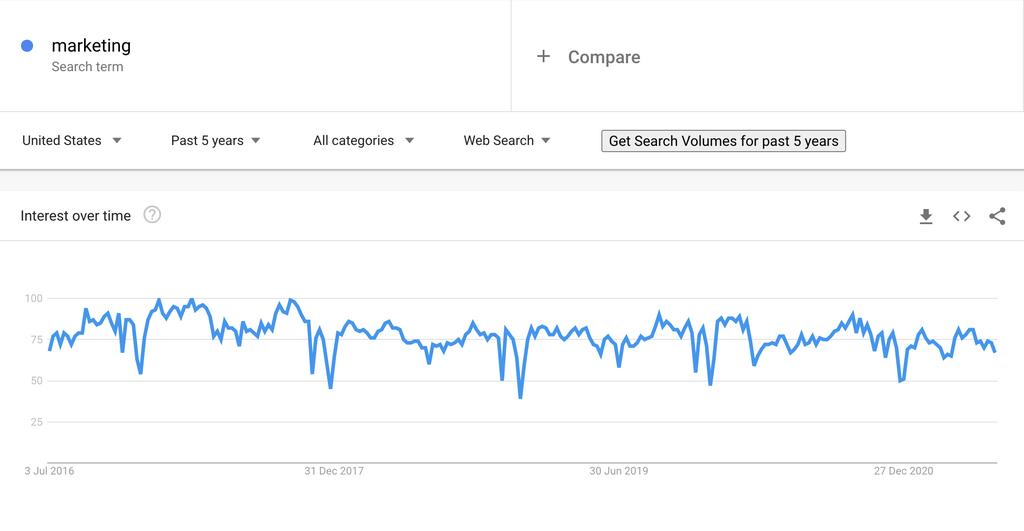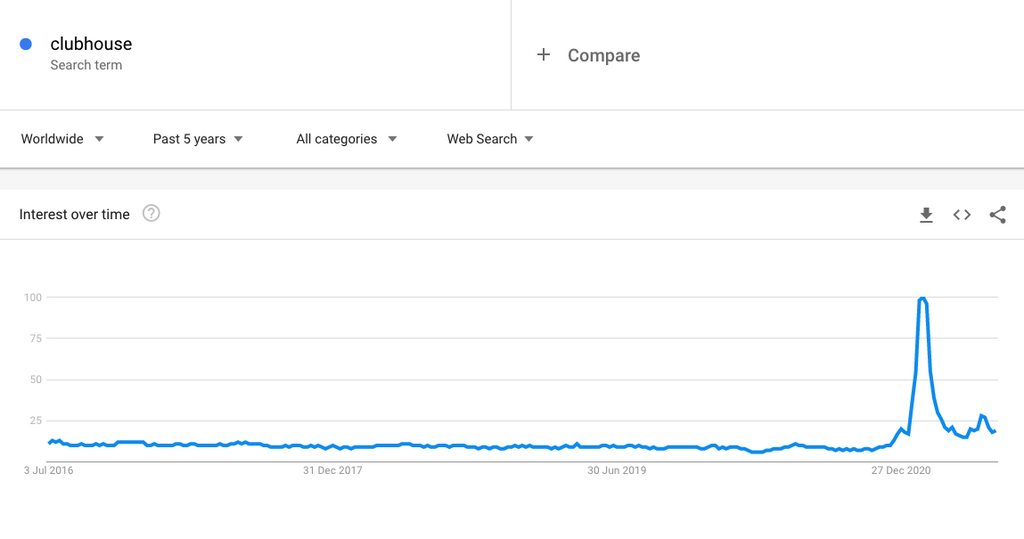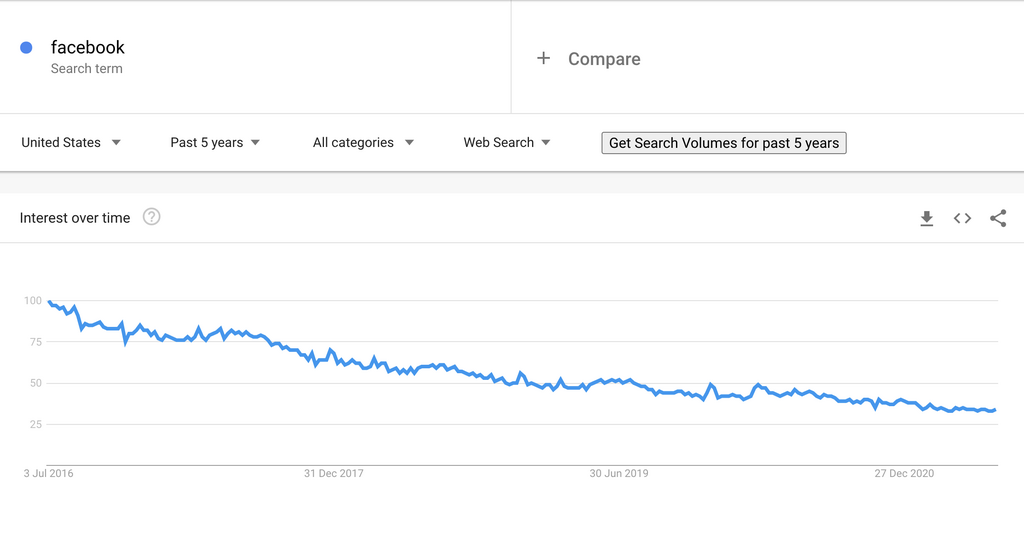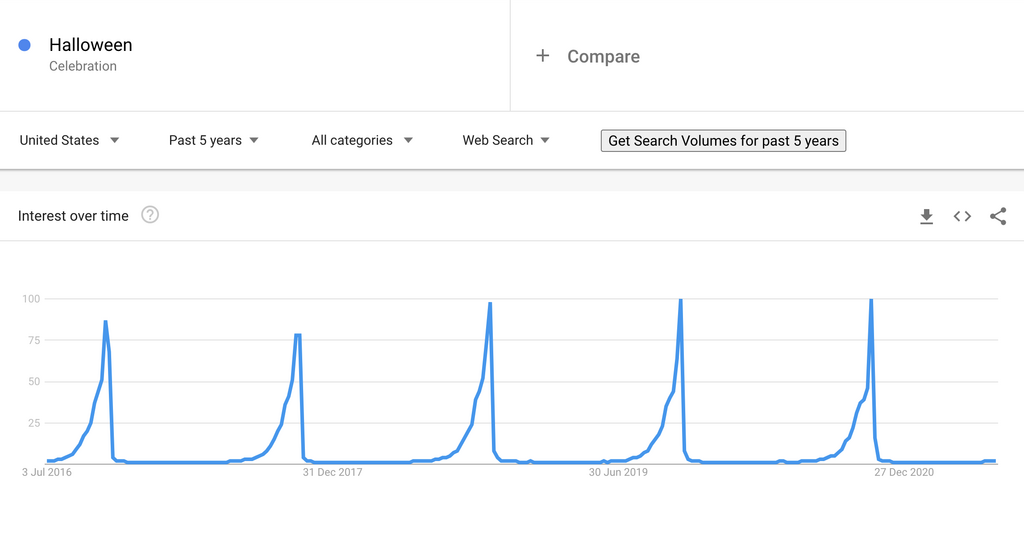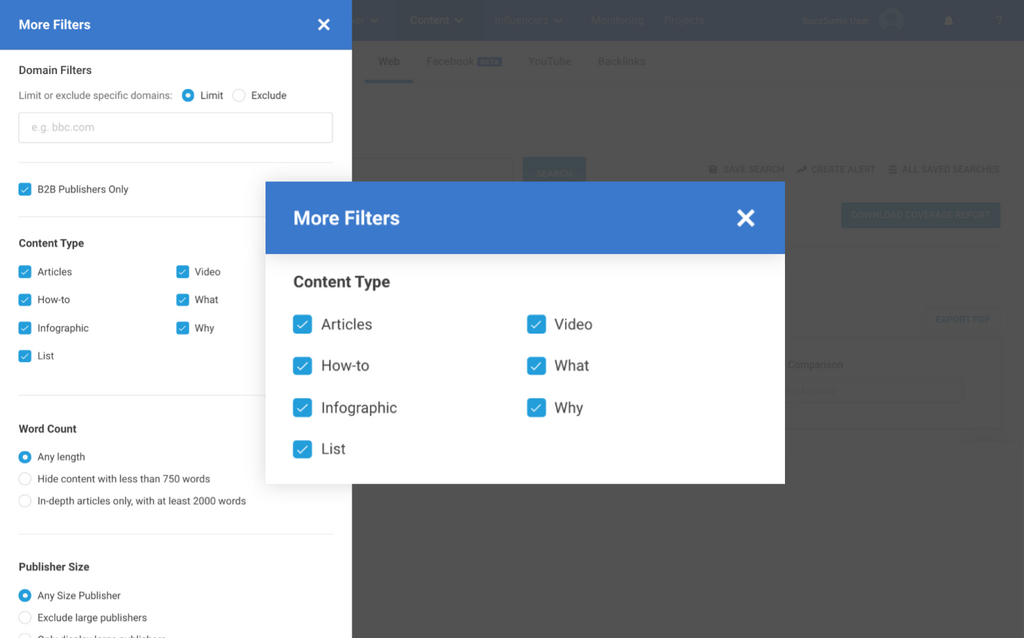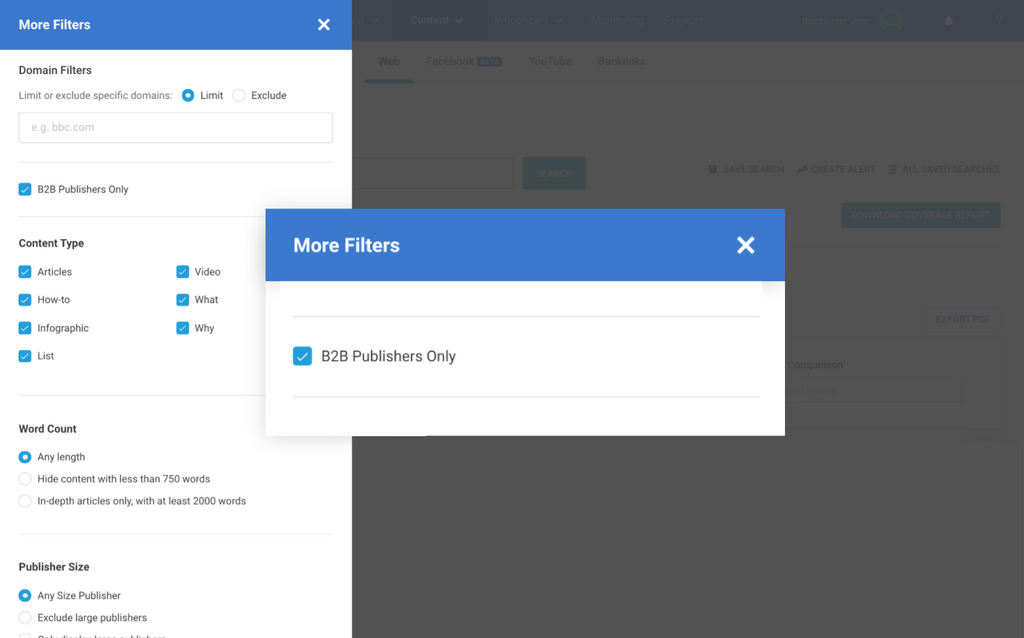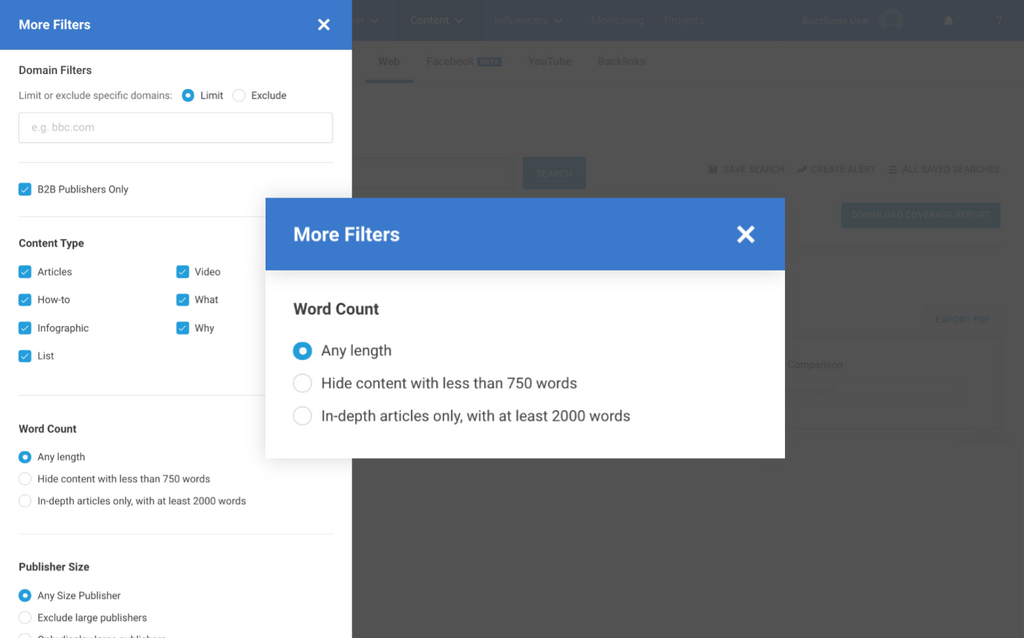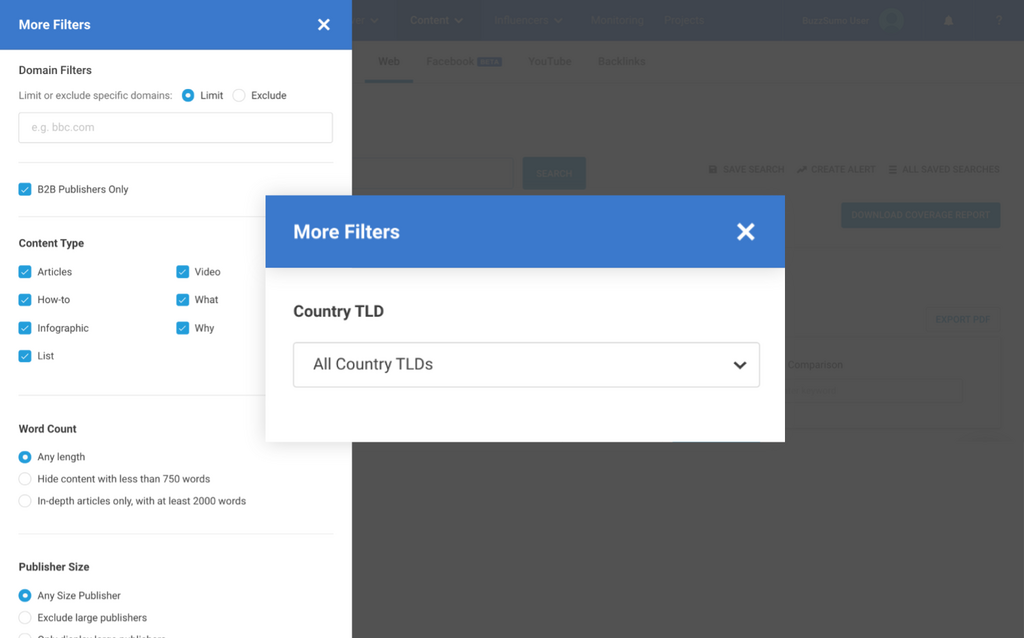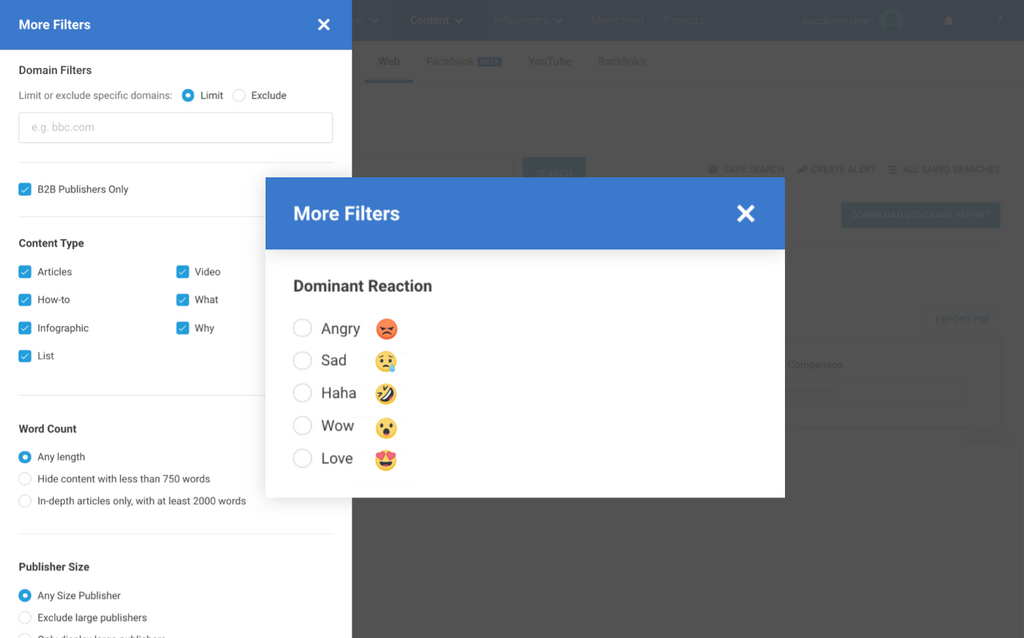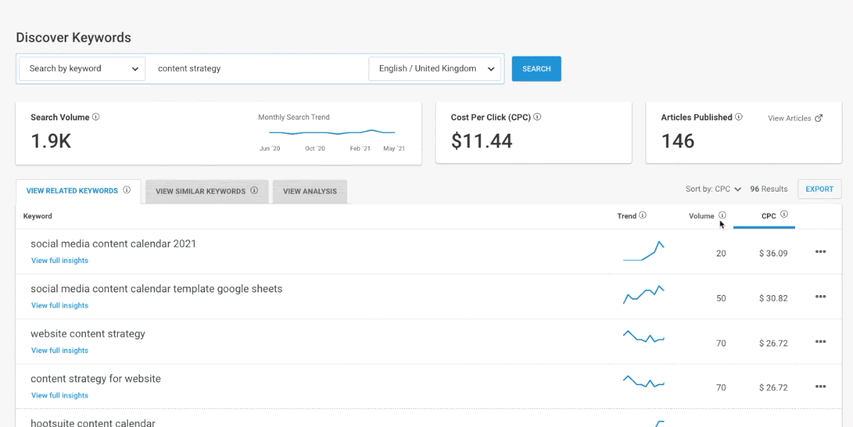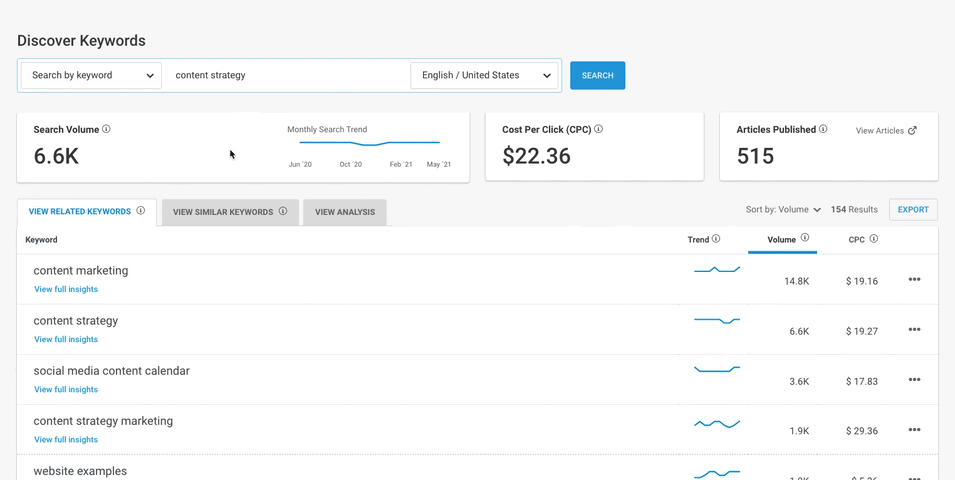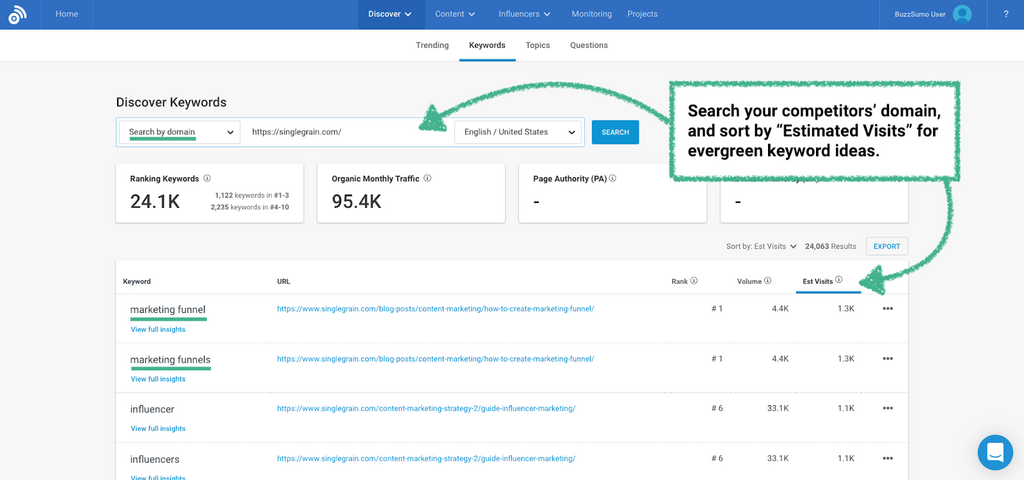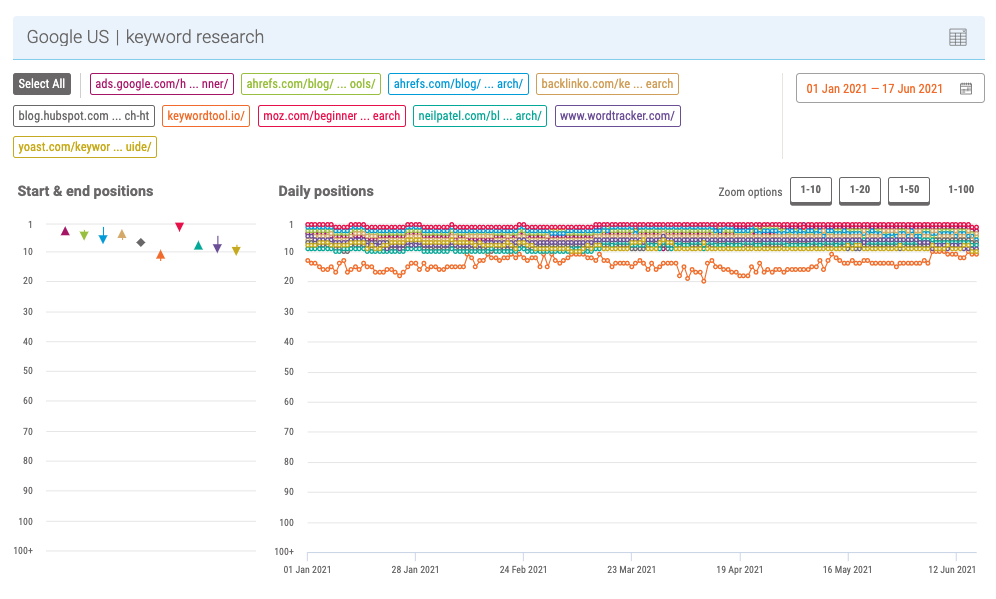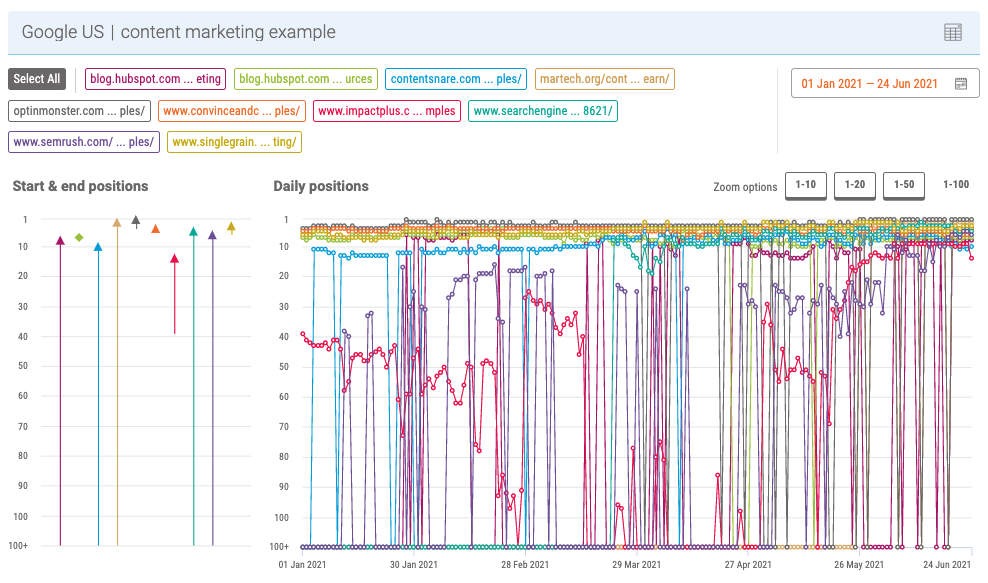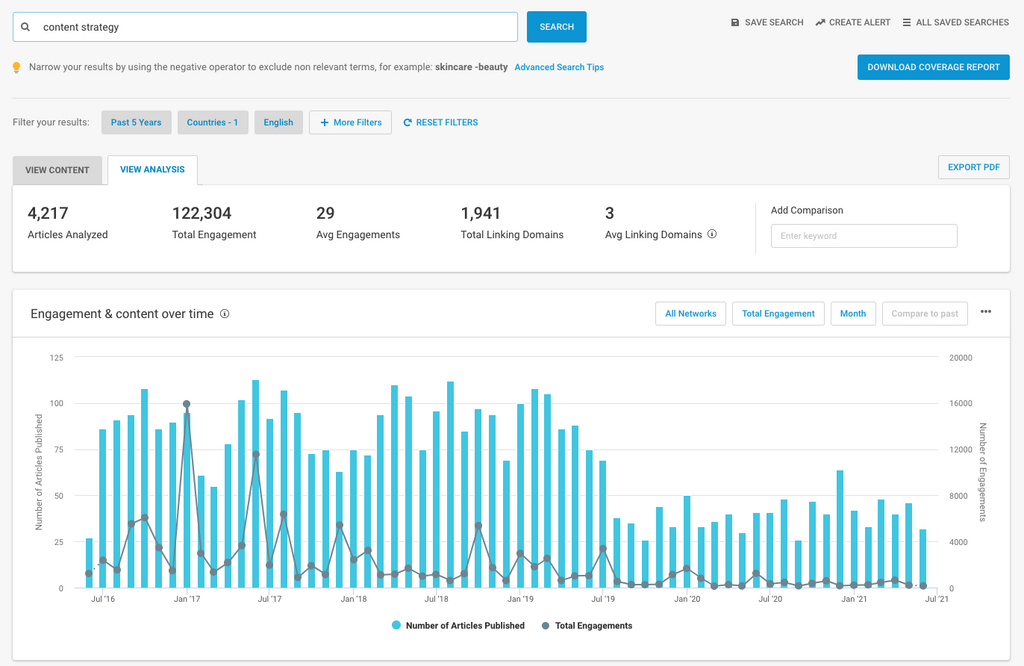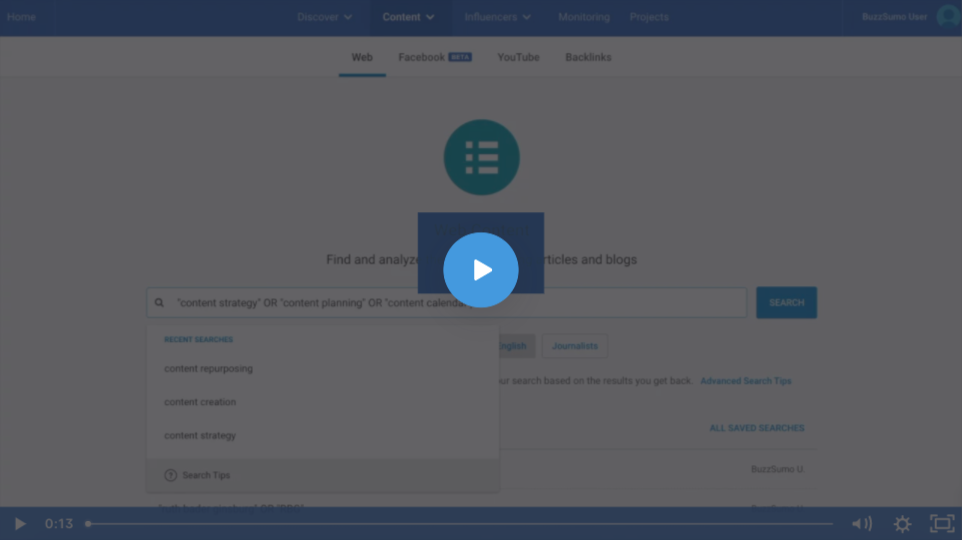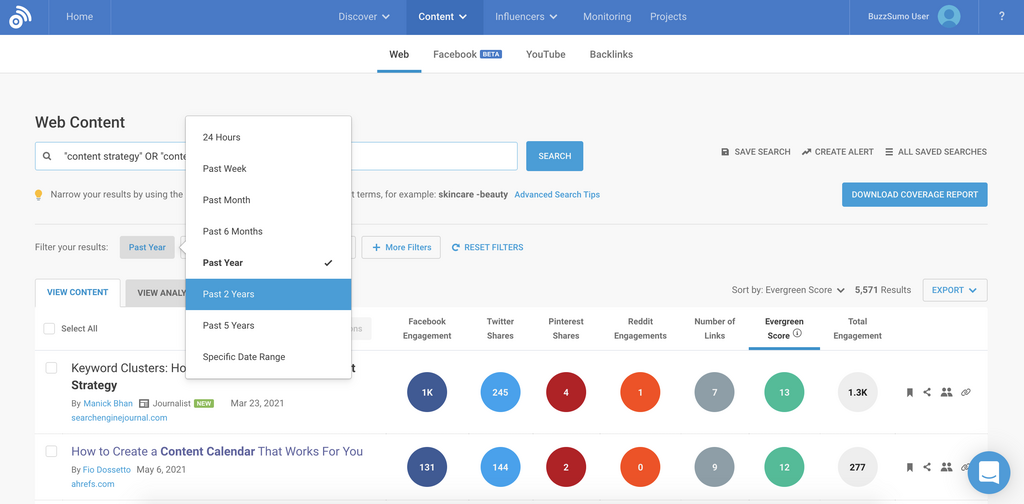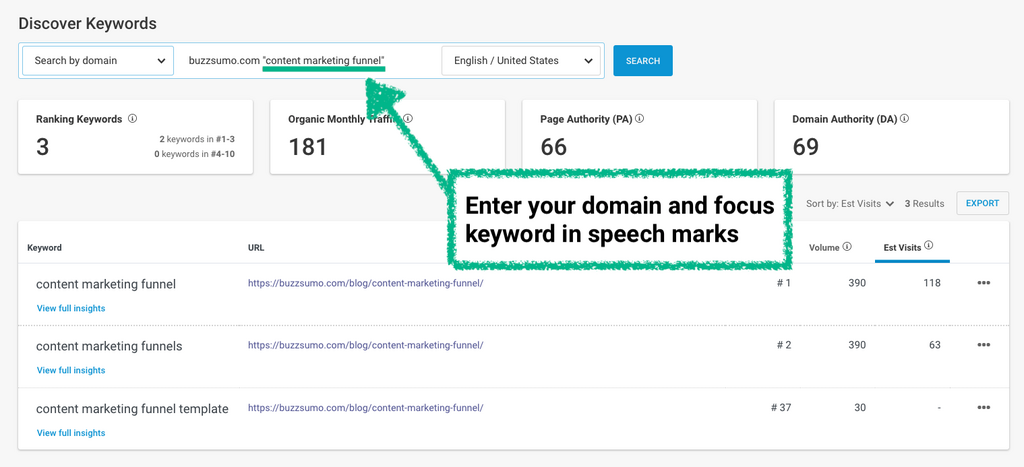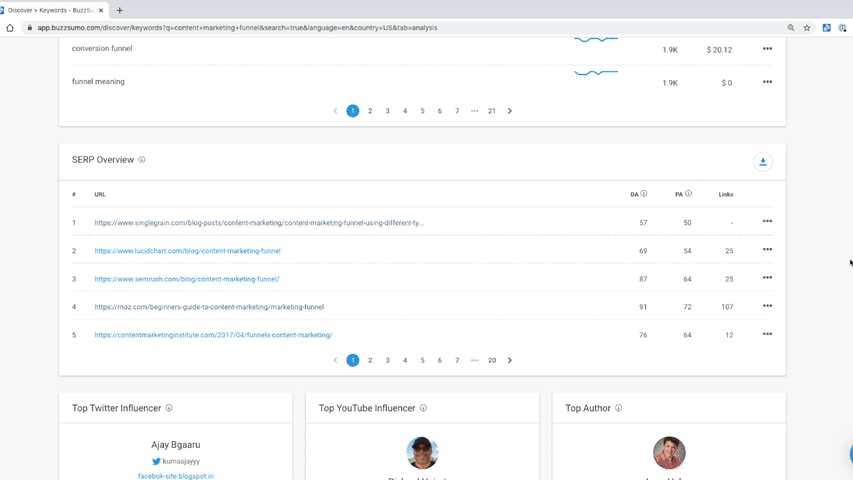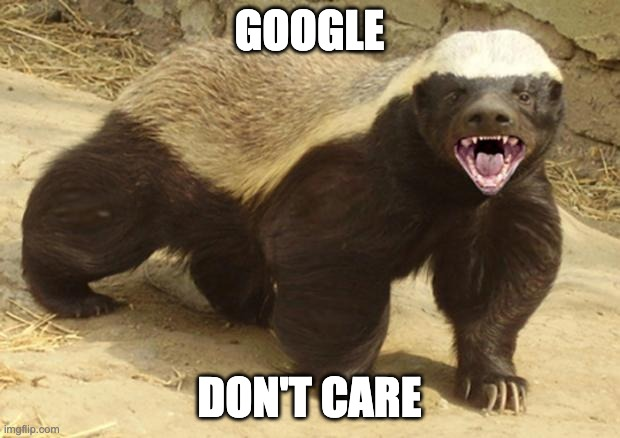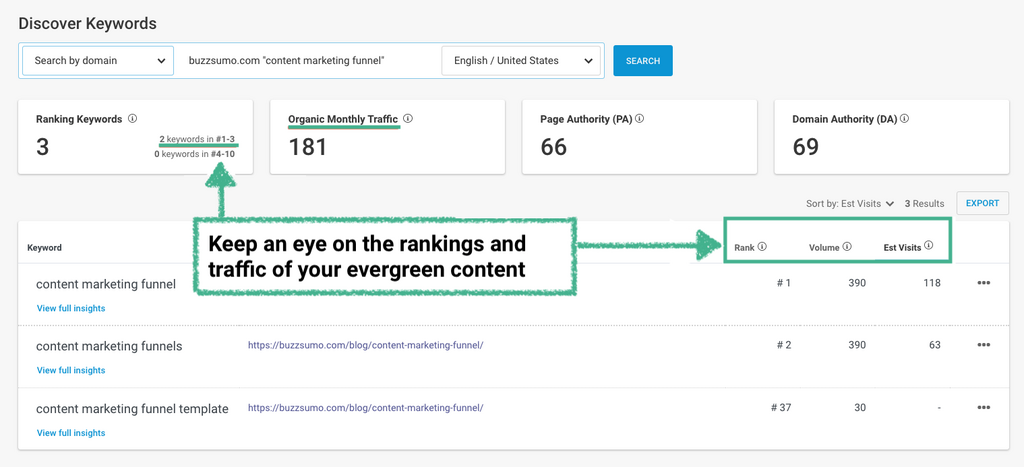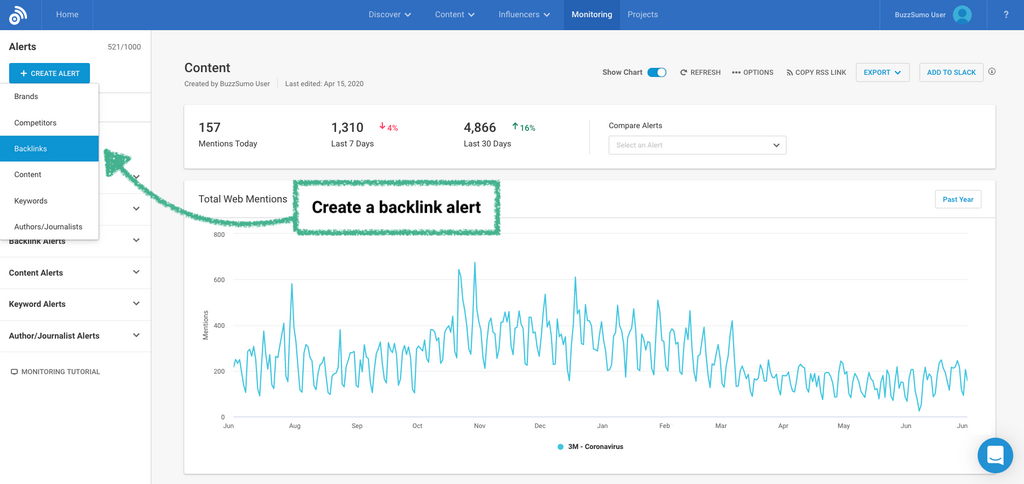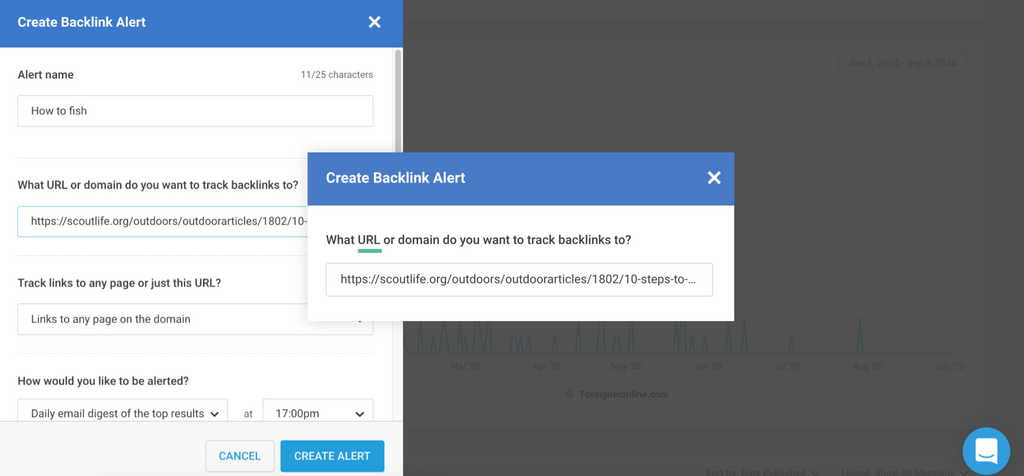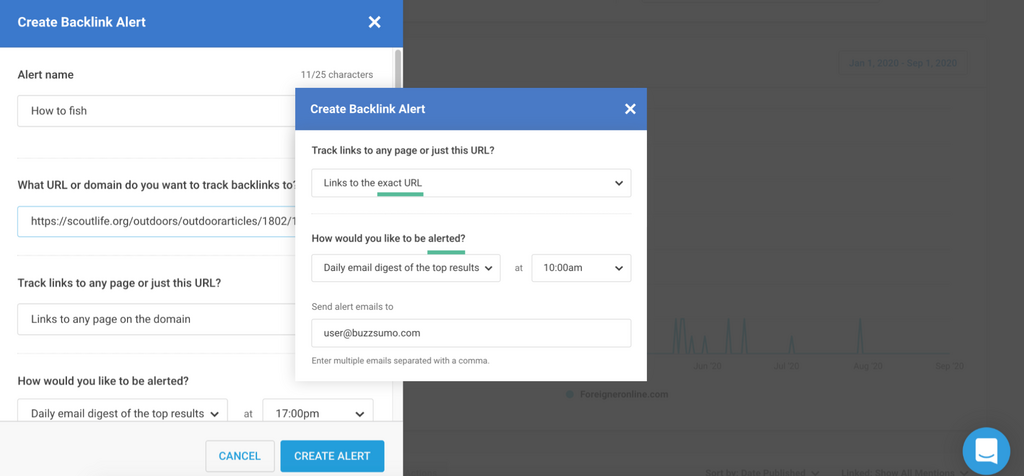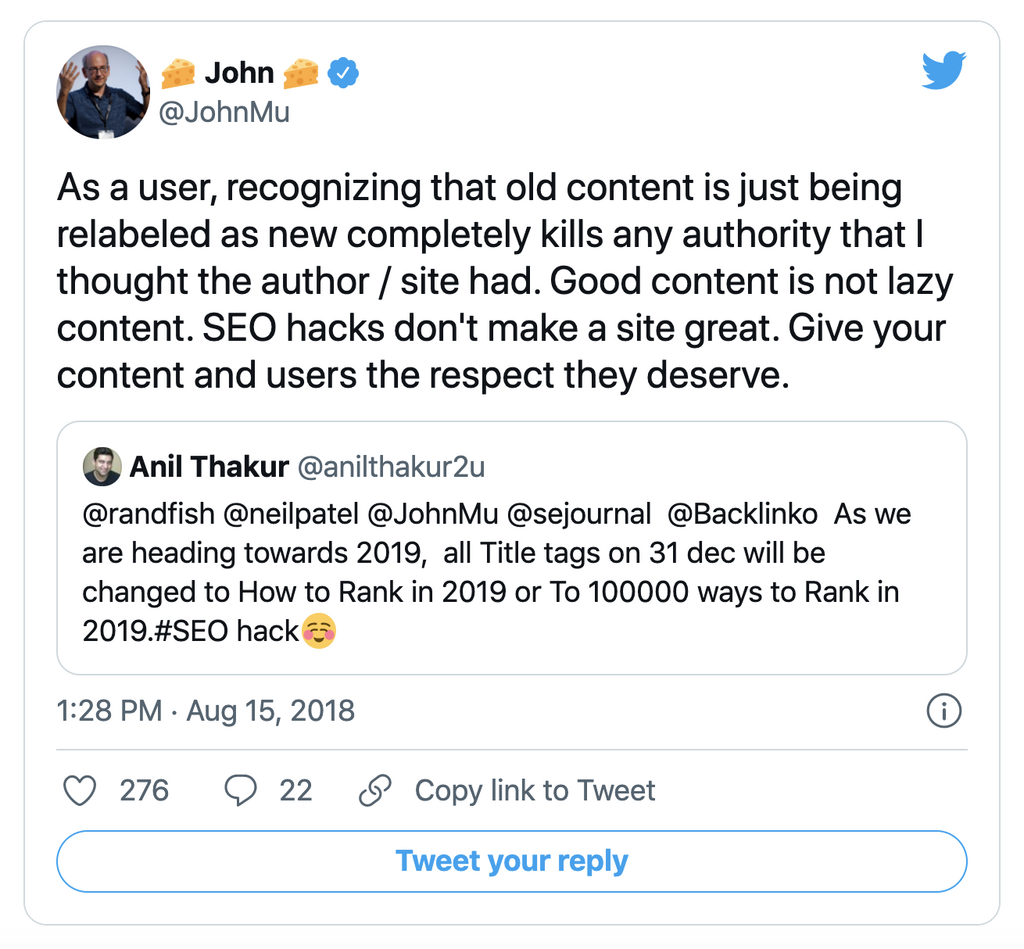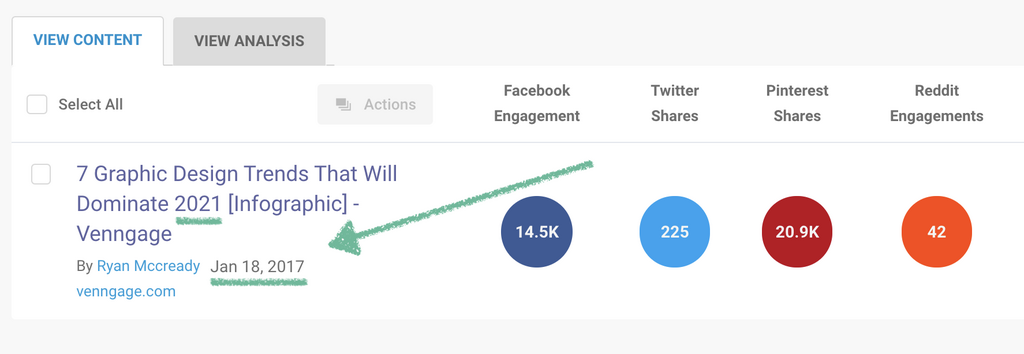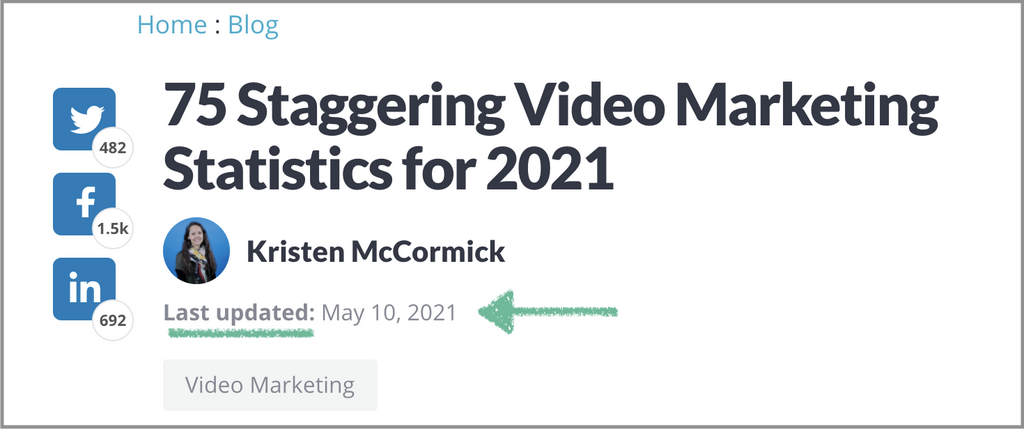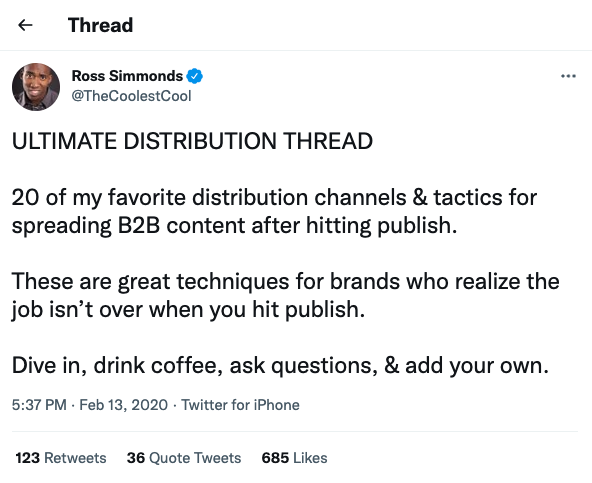What is evergreen content? 🌲
Evergreen content is content that stands the test of time. It’s usually highly informative, instantly actionable, or extremely relatable.
Most content is relevant for a short period of time.
Even some articles that gain significant attention soon after they are published can see that interest decline quickly.
Unlike reactive content – which is led by changing news, trends, and seasons – evergreen topics will always resonate with readers.
As a result, they tend to be shared, ranked, and referenced consistently over time.
Contents
How do you measure evergreen content? 📐
What is a real example of evergreen content? 🌿
Why is evergreen content important?❗
What are the different types of evergreen content trends? 📈
How do you come up with ideas for evergreen content?💡
How do you create evergreen content? ✍️
How do you measure evergreen content?
To stay relevant, content needs to be widely loved and consistently distributed.
Ongoing shares keep content relevant in the eyes of social media algorithms, so this content is more likely to be boosted and discovered.
Gaining links over time is like someone consistently vouching for your content.
These doorways help people to stumble across your post long after it's publish date (at BuzzSumo, many of our older studies are still regularly referenced today 💁♀️ )
And we all know that ranking well in Google helps your content get found consistently.
So, in short, you need to be measuring links, shares, and rankings.
What KPIs do you use for evergreen marketing?
As we just covered, the success of evergreen content is hinged on the holy trinity of KPIs:
- Shares
- Links
- Rankings
A piece of content that scores top marks in all three areas for its focus topic, is what we refer to as “zenith content”.
This content type was inspired by Brian Dean's Skyscraper Technique and Rand Fishkin's 10X content theory.
Evergreen content has big potential to become "zenith content", so keep an eye on these KPIs.
Zenith content is content that is so good, it blows all other articles out of the water.
And it does so through:
- Rich formats
- Neat designs
- Subject matter expert input
- Solving problems and answering real audience questions
- Easy to read content
- Unique theories
- Timeless ideas
- Ongoing distribution
Read more about creating “zenith content” here.
Beyond links, shares, and rankings, other evergreen content KPIs include:
- Dwell time
- Bounce rate
- Goal conversions
- Evergreen Score (in BuzzSumo)
The BuzzSumo Evergreen Score is a quick and easy way to assess the relative success of your evergreen content...
BuzzSumo’s Evergreen Score
At BuzzSumo, we have devised and assigned an Evergreen Score to the 8bn+ pieces of content in our index.
Measured 30 days after the article is published, it calculates the growth in engagements (ie. shares, likes, pins, upvotes etc.) and links an article continues to receive over time.
In simple terms, the higher the score, the more evergreen the article.
Rather than sorting by total shares or links, the evergreen filter shows the top posts that consistently gain shares and links over time.
What is a real example of evergreen content?
An easy way to identify a piece of evergreen content is to think about whether it’s something you’d revisit regularly.
A recipe is a great example of evergreen content.
Unless it’s horseradish and fennel meatballs (ie. my personal idea of hell 🤮 ), we tend to come back to recipes again and again.
A not-so-evergreen piece of content would be something tied to a one-off event, or a fad.
Top evergreen content examples
We sorted 1.8bn pieces of content by the BuzzSumo Evergreen Score over the last five years, to discover examples of top evergreen content.
Here’s some patterns we spotted in categorization:
Example content: How To Protect Yourself And Others
Guides and FAQ content did extremely well in terms of Evergreen Scores, although the great majority of this content was Covid-19 related.
This information is super important at the moment, so it makes sense that it’s evergreen, but one day it might (hopefully) lose its evergreen status.
Example content:
Content which tapped into sociology, ideology, or the cultural zeitgeist tended to generate significant Evergreen Scores.
Enduring subjects like technology and social injustice generated big discussion, which lead to links and shares over time.
Example content:
Human behavior will always manifest in certain ways, regardless of time or trends. In the same way, content that investigates this behavior will be timeless and forever intriguing.
Example content:
- Over Nearly 80 years, Harvard Study Has Been Showing How To Live A Healthy and Happy Life
- Resilience Is About How You Recharge, Not How You Endure
Life optimization has become a big deal over the last decade or so, and we found that content that offers advice on life improvement stays engaging for longer.
B2B Evergreen Content Examples
So, we know some tropes of the most successful evergreen content, but how does that play out in the B2B space?
We explored the top 7 pieces of evergreen B2B content over the last five years, and found that:
- Top-level topics were the most evergreen – from "headline analysis" through to "SEO"
- Research and guides took center stage
- Average word counts reached 4K
- Thorough and format rich content (ie. quality visuals, primary / secondary research, quotes, infographics etc.) successfully engaged B2B audiences over time.
- Date centric content was hugely successful
Here’s the top 7 examples of evergreen B2B content:
1. Wordstream
75 Staggering Video Marketing Statistics for 2021
2. CBS Insights
The Top 20 Reasons Startups Fail
3. BuzzSumo
100 Mil Headlines Analysis. Here’s What We Learned
4. SproutSocial
The Best Times To Post On Social Media In 2021
5. Hubspot
What Video Marketers Should Know in 2021, According to Wyzowl Research
6. Backlinko
The Definitive Guide To SEO In 2021
7. Venngage
7 Graphic Design Trends That Will Dominate 2021 [Infographic]
For more top B2B content marketing examples, and insight into which topics and content types drive the most engagement, check out our 2022 study.
Brian Dean
Founder, Backlinko
“One of the underrated keys to publishing evergreen content is keeping your existing content up-to-date. In fact, I tend to update every post on our site at least yearly. Which ensures that everything is up to date.”
Why is evergreen content important?
1. Evergreen content drives traffic
Whether it’s through higher rankings, or increased ownership of keywords, the main benefit of content designed to be evergreen is that it delivers a consistent stream of traffic to your site over time.
Evergreen posts stand out in your Google analytics or site traffic statistics. They are the posts that consistently bring visitors and conversions to your site month after month.
2. Evergreen posts are backlink magnets
These posts are super beneficial to your SEO strategy as they not only drive traffic, they also gain links consistently over time.
Backlinks function as a vote of confidence for search engines. When Google or another search engine wants to know if a piece of content is valuable, its bots will look for links from other authoritative sources.
3. Evergreen blog posts offer great value for money
Because evergreen blog posts retain their relevance and keep working for your brand, they offer a cost-effective answer to increase the ROI of your content and evergreen marketing.
Think of evergreen content as a one-time investment that’s going to bring in big returns.
When you produce new content all the time, you lose time, traction, and relevance.
Investing in evergreen content is like investing in a high-quality pair of shoes. You’ll spend more at the beginning, but save $$ over time.
4. You can distribute evergreen content forever
Again, evergreen content doesn’t lose relevance. If you update it as needed, you can keep sharing it because you know that your audience will continue finding value in the piece.
On the other hand, if you’re constantly producing new posts, you’re forced to take part in the attention and relevance rat race.
You can only share fleeting pieces so many times before your audience gets tired.
With evergreen content, your customers keep finding new value.
5. Evergreen content allows time for smarter reporting
If you’re constantly producing and promoting new content, you won’t have time to analyze success.
When you’re promoting something consistently over time, you can monitor results, continuously optimize, and experiment with distribution tactics.
For example, you might discover a specific message variation performs exceptionally well on Reddit vs Twitter, and tailor your distribution strategy accordingly.
Or you might experiment with lead magnets and different CTAs within your content to optimize the middle of the funnel.
When you have more time to test, experiment, and analyze a piece of content, your insights get more sophisticated.
What are the different types of evergreen content trends?
We (the BuzzSumo team*) have put our heads together and come up with a rather poetic way to categorize evergreen content trends.
(*available for birthdays, weddings, and bar mitzvahs)
Evergreen
Topics that maintain audience interest year after year.
Although the overarching topic of "marketing" experiences the odd dip around Christmas it's, for the most part, extremely popular every year.
Nevergreen
Otherwise known as reactive content (ie. Newsjacking). This type of content can give you a big initial boost, but is susceptible to near-instant decline.
An example of a nevergreen trend is the drop-in audio network Clubhouse.
After big growth and billions in investment, interest around the brand has nosedived, and doesn't look to be returning.
To avoid nevergreen content, steer clear of social media fads, memes, or pop culture references in your content.
Instead think classic and timeless ideas.
Severgreen
A topic that was once evergreen – ie. popular year-on-year – but is now in decline. Facebook is a great example of this.
Fairweathergreen
These are content topics that will earn you traffic repeatedly, but not consistently.
Examples include seasonal or holiday based content around Black Friday, Christmas, and Halloween.
This can also extend to yearly trends prediction content such as "trend of the year" guides.
How do you come up with ideas for evergreen content?
For a TL;DR check out and save our handy infographic:
1. Discover the best evergreen content types and topics
Nailing the format is the first step to creating a piece of kickass evergreen content.
We worked with Backlinko founder Brian Dean to analyze 3.6bn pieces of evergreen content in the BuzzSumo database and assess average evergreen scores by headline, format, and industry – amongst many other things.
Check out the report. There are some awesome insights in there.
It seems that headlines featuring numbered lists, the word “best”, and the digital marketing sector all had the highest evergreen potential.
Use this insight to inform your content creation, but don’t let it stop you exploring new formats, topics, and industries.
Ultimately it’s the quality of the content that drives traffic.
Marry this insight with a laser-focus on meeting your audiences’ needs, and offering them the best possible answer to their most pressing questions.
You can explore Evergreen Scores by content type, and a bunch of other filters, using the BuzzSumo Content Analyzer:
2. Analyze search data
Unless a searchers’ intent is to find fresh content (ie. news or product reviews), Google will prioritize content that matches a user’s intent.
That's why you’ll sometimes find older content in the top spots – Google has determined that it provides the best answers to the queries people have today.
For this reason, search is inherently evergreen.
That’s why you need to be analyzing search volume, trends, and topics to inform your evergreen content ideas.
Here’s how:
1. Research keyword volume data
Validate your evergreen content ideas with search volume data, to check whether audiences are actually interested in your topic.
BuzzSumo’s Keyword tool gives you search volume and Cost Per Click (CPC) data for your keyword, but also related and similar keyword ideas, so you can cherry pick the most valuable term.
2. Look at search trends
Search volume is a great first step for assessing the popularity of a keyword, but it’s the trend that confirms its evergreen status.
Head to Google Trends and search your evergreen keyword idea to validate whether it has sustained search interest year-on -year.
In BuzzSumo you can also view search demand through the year, to check that your topic idea is evergreen.
In the example below, we can see that the term “Content strategy” shows high volume all year round.
3. Get ideas from your competitors’ evergreen traffic
Your competitors are bound to have created evergreen content on topics you haven’t explored.
All you need to do to find that content is dive into their traffic.
This will show you which keywords are driving their organic traffic on an ongoing basis.
We do this by searching our competitor’s domain in the BuzzSumo Keyword Tool, and sorting by “Estimated Visits”.
In the example below, we can see that digital marketing agency Single Grain’s organic traffic is driven by the evergreen topic: “Marketing funnels”.
Top traffic pages infer evergreen status, so you can be pretty sure that this is a good evergreen keyword / topic idea to use in your own strategy.
4. Pay attention to SERP intent volatility
If page one in Google returns the same content consistently, it usually means:
- Audiences are satisfied with the results
- Google has properly understood the search intent of the keyword
We use the Position Explorer Chart in Pi Datametrics to validate SERP volatility. As you can see below, the search term "keyword research" returns largely the same content on the top pages of Google over a six month period.
This is a great indication that this term is evergreen.
On the flipside, the term "content marketing example" returns a noisy landscape, with only some consistent players on page one.
This may be one to avoid.
3. Analyze social and content trends
Social media is all about viral trends and hot topics – ie. Not quite the place for evergreen content…
Or is it?
Monitoring social shares of content at an aggregate level over time can help you understand which topics trend consistently.
Let’s take a look at the topic of “Content strategy” again, in the BuzzSumo Content Analysis Report.
This evergreen search trend has turned into a “severgreen trend” on social.
In other words, engagement surrounding it has dropped dramatically over the years.
But so too have the number of articles published.
We know from earlier search trend analysis that this term has high search demand year-round.
But it seems there’s just not enough new, quality content being created and shared on the subject.
By studying search and social trends, you can better identify these kinds of evergreen content opportunities.
4. Analyze content by its Evergreen Score
To quickly understand a topic or competitor’s ability to generate links and shares over time, you can use the BuzzSumo Evergreen Score.
Search for evergreen content by topic
Simply enter the topic(s) you want to analyze and filter by evergreen score as shown below.
Here, the aim is twofold:
- To look at the evergreen potential of content within that category
- To learn from the best performing evergreen content in that category
Repeating this type of search for different topics will help you understand which one has the greatest evergreen potential.
If you’re a Large or Enterprise BuzzSumo user, you can take this analysis one step further by viewing Evergreen Scores over two years or more.
This will reveal even stronger evergreen content that stands the test of time.
Check out our plans for more information.
Search for evergreen content by competitor domain
You can also search for evergreen content on a competitor, or comparator website by entering the domain you want to search for rather than a topic, and sorting by Evergreen Score.
The aim here is to examine your rivals’ top evergreen topics to inform your own strategy.
In the example above, Search Engine Journal’s most evergreen topics include yearly SEO trends, voice search, and Click Through Rate (CTR) research.
How do you create evergreen content?
1. Involve influencers and contacts
It’s people that make your content evergreen.
Involving others during the process of creating your evergreen content will mean it has a far better chance of being shared and linked to long after it’s published.
Conduct surveys, ask for peoples’ opinions, seek their expert advice, and work this feedback into your content.
We did just this, and managed to go viral with our own report, which – as you saw earlier – is still one of the most evergreen pieces of B2B content to date – despite being published in 2017.
2. Think about how to organize your evergreen content
Properly organizing your evergreen content will not only determine its SEO success, but also its appeal to readers.
That is to say, the better structured your content is, the more engaging and evergreen it’s likely to become.
To work out how to organize your evergreen content, you need to first look at your own content back catalogue.
What to do if you’ve written about your evergreen topic before
First things first, you need to know if you’ve already created content on your evergreen topic.
This intel will not only help you avoid things like cannibalization, it will give you the opportunity to rank faster and higher in the SERPs if you can update existing content.
Looking at metrics like links, shares, and traffic, make a decision on whether to:
- Update the existing content
- Create newer, more relevant content from scratch
In the latter instance, you will then need to decide whether to:
- Redirect the existing content to the new content
- Get rid of the existing content altogether (e.g. through de-indexing)
- Merge the best parts of the existing content with the new content
- Change / re-theme the existing content (so that it is not too similar to the new content, and doesn’t cannibalize in the SERPs)
You can find out what you’ve already written on a subject in BuzzSumo’s Keyword Tool.
Just type in your domain, followed by your evergreen keyword in speech marks.
3. Learn from and outdo “zenith content”
Earlier on we mentioned “zenith content” – that’s content that performs best in its category for links, shares, AND rankings.
Evergreen content is more often than not a form of “zenith content” – it drives big engagement as a result of being super thorough and genuinely helpful.
If you want to create evergreen content, there’s no better strategy than learning from the best.
How to create evergreen “zenith content”
- Head to the SERPs and type in your evergreen keyword.
- Open the content of your page one competitors.
- Hit the BuzzSumo Chrome Extension to explore its links, shares (broken down by channel), and Evergreen Score.
- Find the competitor that has the highest ranking, while also maintaining the most shares and links.
- Do an analysis of their content to get ideas for creating “zenith content” that’s even better.
Do they include primary research? A bunch of expert quotes? Was their article bolstered by rich content like nifty video explainers?
Whatever it is, take learnings, and think about what you can do to create or update your own piece of "zenith content".
How do you drive continued traffic to evergreen content?
By this point, you’ve put in all the legwork researching, validating, and creating, some awesome “zenith” evergreen content.
But how do you make sure that your content gets to, and stays where it needs to be?
a) Track your rankings
Appearing in search engines is about creating content that your audience loves to read.
As soon as your content stops doing that, Google will demote it.
You can keep track of your content easily in BuzzSumo.
Enter your domain followed by the focus keyword in speech marks, to find out the rankings and estimated visits of your evergreen content.
Doing this periodically will help you work out if and when your content is starting to lose relevance.
Then all you need to do is check out the competitors usurping you, and work out why Google prefers them.
b) Track your links
Losing links is another clear indication that interest in your evergreen content is waning.
Make sure you set up a backlink alert as soon as you create a new piece of evergreen content.
This will give you a view of links earned over time.
You’ll know when your content is beginning to lose relevance and authority, if links slow down or start to drop off.
You can do this in BuzzSumo Monitoring, by following the steps in the slider below.
From there, you can decide whether your content needs updating or simply redistributing.
c) Track your shares
In the same way that you can keep tabs on your competitors’ evergreen content shares via the BuzzSumo Chrome Extension, you can also track shares of your own content.
Check back on your evergreen content regularly, and if you notice shares slowing, consider updating or giving the content a push across previously unexplored channels (ie. Quora).
d) Refresh your content
If you think updating your content is as easy as changing the date and hitting republish, then think again my friend!
Relabeling old content as new “completely kills authority” in the words of Google Search Advocate John Mueller.
Every time you update, you need to focus on adding value and giving your reader fresh information.
If you’re lacking inspiration, check out how your competitors tend to update their content:
1. Find a piece of “zenith” evergreen content written by a competitor.
2. See when the content was originally published in BuzzSumo.
3. Take that content over to The Wayback Machine to explore what was updated, and get ideas for emulating your competitors’ refresh success.
For more in-depth content refresh tips, read our latest guide: How To Refresh Old Content.
How is the top evergreen content updated?
We studied the different ways the top B2B evergreen content (discovered earlier on in this guide) had been updated.
Here’s what we found:
- Hubspot and Wyzowl have been updating the findings of their hugely successful evergreen video study since 2018.
- The content has been re-written from scratch every time, to make it relevant for the new year, but has stayed on the same URL.
- Hubspot makes a point of informing readers of content updates at the bottom of the article.
- Wordstream has a very similar process to Hubspot – ie. rewriting from scratch on the same URL. The only difference is, although they inform readers an update has taken place, they don’t reveal the date of first publish.
- Venngage takes an entirely different approach; updating its yearly graphic design trend blog, simply by writing the new content above the old.
Having a content archive under one URL, and keeping your older content alive, may well be a safer option for attracting and retaining backlinks – especially if readers are still referencing your past research.
But what about updating content that isn’t year dependent or research driven?
- CBS Insights has gradually enhanced its evergreen content “The Top 20 Reasons Startups Fail” since 2017.
- What started life as a blog with a single image and a count of just 44 words, has evolved into an extensive 5K word guide packed full of expert quotes, engaging imagery, and enlightening data.
So, what does all of this mean?
- Don’t be afraid to rewrite your content from scratch – as long as you’re improving it with every iteration!
- Make sure your evergreen content stays on the same URL! The top seven evergreen B2B blogs were all created between two - four years ago, and have since been updated on the same URL.
Creating date centric evergreen content – yay or nay?
While date centric content (ie. yearly trend guides) can age quickly, the data we analyzed with Brian Dean proved that:
1) Content with recent information is more likely to be linked/shared
2) Showing readers when the article was updated makes it more likely to be linked/shared.
Pro Tip
Keep your URL free of numbers 🔢 and dates 📅
For example, The 2021 Ultimate Guide to Bonsai Trees should be located at a URL like this: bonsai.com/ultimate-guide-bonsai-tree,
not: bonsai.com.2021-ultimate-guide-bonsai-tree.
We do this with our own content, including our top content marketing influencers of the year post.
e) Distribute forever
We at BuzzSumo did a study with OkDork, which analyzed the percent drop in social shares for a post three days post-publish.
We found that shares dropped at least 96%, across Facebook, Twitter, LinkedIn, and Pinterest after this time.
And just to add insult to injury, social media algorithms have become even trickier to navigate over time.
They now prioritize posts based on behavior rather than chronology, meaning your content might never even get seen by certain audiences, unless it gains a certain amount of traction.
So, what does all of this mean?
It means that you need to be constantly distributing your evergreen content, to boost your chances of building interest.
In their study, OkDork also looked into the anomalies – ie. the content that had more shares after a week had passed.
They found that repromoting content a week after the first promotion, and tying evergreen content into current events, was key to boosting its shares.
Pro Tip
Distribute on Reddit
We teamed up with Brian Dean, and found that Reddit is the most evergreen channel 🌿
Reddit is a discursive forum, which gives you greater traffic opportunity than other social media networks.
While it's still popular for reactive news and trends, niche subreddits are filled with people who have a keen interest in specific topics.
These communities will research, seek out, and share informed evergreen content.
Make sure to add your content to the mix.
Where should you distribute?
1. Repurpose your evergreen content into...
- Emails and newsletters
- Twitter threads
- Twitter fleets
- Twitter spaces
- LinkedIn carousels
- LinkedIn articles
- LinkedIn stories
- LinkedIn posts
- Facebook stories
- Facebook posts
- Instagram posts
- Instagram stories
- Instagram reels
- Tik Tok videos
- Medium articles
2. Reply to questions on forums that your evergreen content answers (ie. Quora)
3. Turn your evergreen content into snackable YouTube videos
As Ross Simmonds, Founder of Foundation Inc, would say: Create once, distribute FOREVER.
Ps. check out Ross’ Twitter thread on distribution. It’s pure gold.
So that's that. If you stayed till the end, you're basically an evergreen guru.
But, if you still think there's more to know, check out our related content:
- [blog] How To Refresh Old Content
- [blog] Updating Content: Why Your Old Content Needs a Spruce Up
- [webinar] 9 Essential Evergreen Need-To-Knows With Brian Dean
Let us know if you have any questions or suggestions on our LinkedIn, Twitter, or Facebook.
If you want to try out any of the evergreen content techniques shown in this study, go ahead and sign up for a free 30-day trial of BuzzSumo, or check out our plans and pricing here.
Categories
Content MarketingThe Monthly Buzz⚡
Subscribe to BuzzSumo's monthly newsletter to:
Stay up-to-date with the best of the best in content marketing 📝
Get data-informed content, tips and tidbits insights first 👩🏻💻
Read top shared content by top marketing geeks 🤓
Try
Enter any topic, term or url to search to see BuzzSumo in action. It’s free!
100% free. No credit card required.

